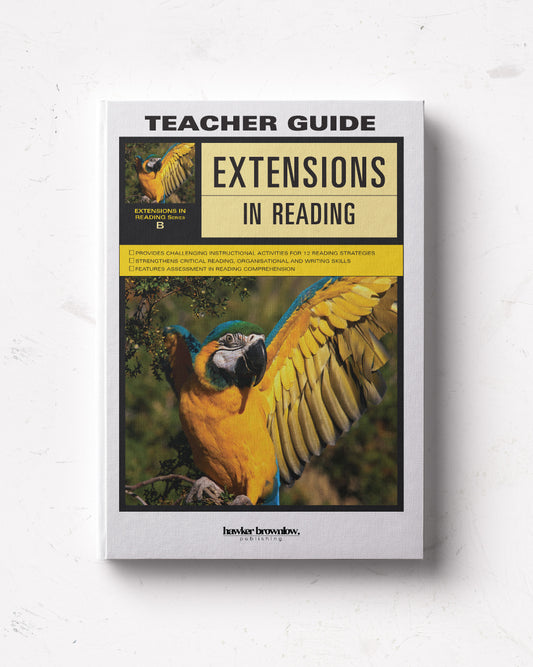The science of reading has revolutionised our understanding of how students learn to read, and educators across Australia are eager to align their practise with the latest evidence-based strategies. Programs like Extensions in Reading offer a structured pathway to help teachers bridge the gap between research and practise by providing a comprehensive approach to reading instruction that focuses on strategic comprehension, vocabulary development, and writing.
The Power of Explicit Comprehension Strategy Instruction
One of the key features of Extensions in Reading is its explicit instruction in 12 essential comprehension strategies, such as identifying main idea, comparing and contrasting, and drawing conclusions. Each lesson follows a consistent instructional sequence grounded in the gradual release of responsibility model:
1. Direct Explanation: Lessons begin with clear, teacher-led explanations of the target comprehension strategy, ensuring students understand what the strategy is, how it works, and when to use it.
2. Modelling: Teachers use think-alouds to model the strategy in action, making their thought processes visible to students.
3. Guided Practise: Students have opportunities to practise applying the strategy to engaging texts, with scaffolding and feedback to support their understanding.
4. Independent Application: As students gain confidence, they apply the strategy independently to cement their skills.
This explicit instructional sequence, detailed in the Teacher Guide, equips teachers to deliver high-quality, evidence-aligned comprehension strategy instruction.
Engaging Texts and Graphic Organisers
Extensions in Reading features a variety of high-interest reading selections across genres, from informational articles to realistic fiction stories. These engaging texts provide rich opportunities for students to practise and apply the comprehension strategies they are learning.
Additionally, the program incorporates graphic organisers, such as sequence chains and compare/contrast matrices, to help students visualise and organise their thinking about texts. Education research highlights the benefits of using graphic organisers to make abstract comprehension strategies more concrete and tangible for students.
Vocabulary Development and Writing Instruction
Extensions in Reading also emphasises vocabulary acquisition, with activities that help students learn new words in context and develop a deeper understanding of word meanings. The Student Book showcases vocabulary exercises that encourage students to use context clues and word analysis strategies to build their word knowledge.
Furthermore, the program integrates writing instruction, teaching students about the features and structures of various genres. By analysing and crafting texts in different genres, students strengthen their comprehension and written expression skills.
Assessment and Teacher Support
The Teacher Guide includes assessment resources, such as student self-assessments and teacher rubrics, to help educators monitor student progress and provide targeted support. Answer keys for the Student Book activities are also provided, making it easier for teachers to guide instruction and provide feedback.
Transforming Reading Instruction Across Australia
As the science of reading continues to reshape our understanding of literacy development, educators need resources that help them translate research into practise. Extensions in Reading offers a comprehensive approach to reading instruction, with a focus on explicit comprehension strategy instruction, engaging texts, graphic organisers, vocabulary development, and writing instruction. By aligning their teaching with this program, educators across Australia can feel confident that they are equipping their students with the skills and strategies needed to become proficient, strategic readers.The journey to reading success starts here – one strategy, one text, one student at a time.







